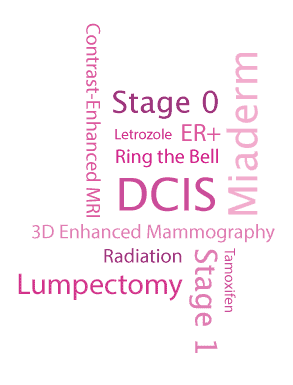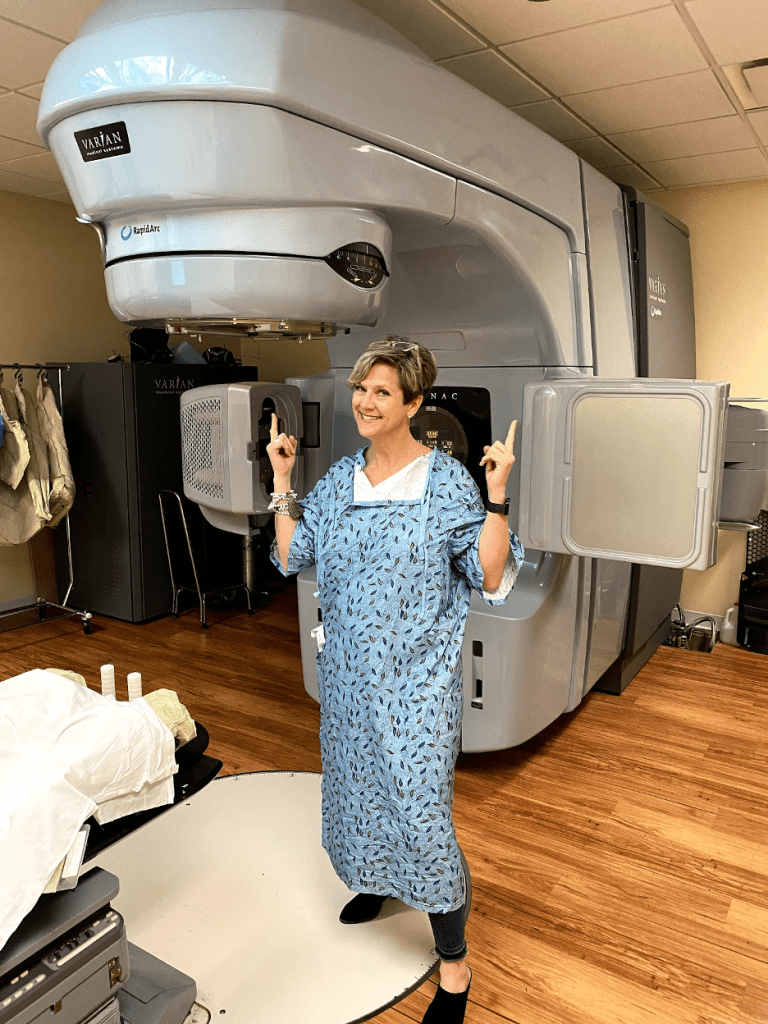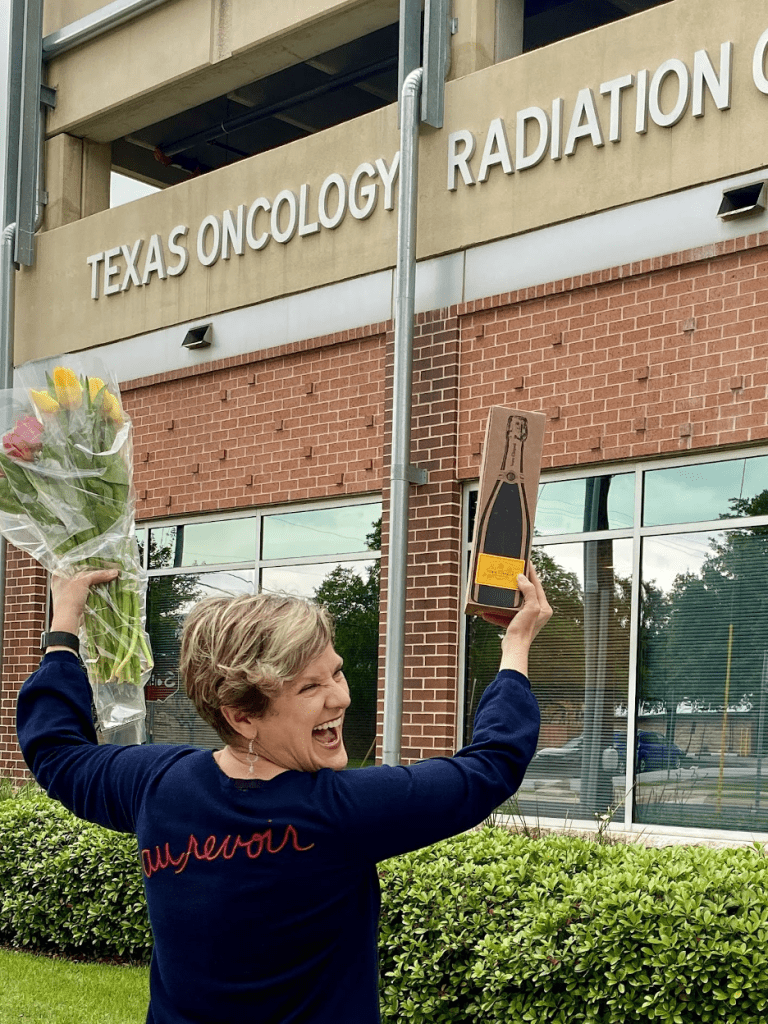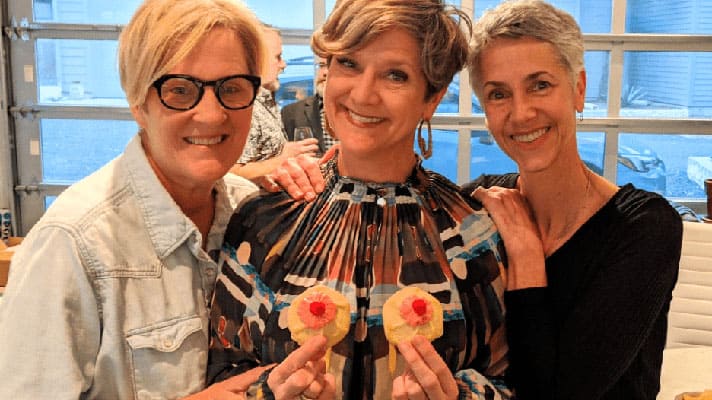It’s a year later, and I am incredibly grateful that I don’t have any significant updates to share…which makes me one of the lucky ones. My treatment plan includes regular mammograms with enhanced imaging and daily doses of estrogen inhibitors. My breast cancer was ER+ or Estrogen Receptor-Positive, meaning the cancer cells feed on my estrogen hormones.
Because the pandemic forced many facilities to consider mammograms as elective procedures, millions of women have delayed or completely abandoned this routine breast cancer screening. So in honor of breast cancer awareness month, I wanted to revisit my story in hopes that even one person will see and get their mammogram scheduled.
- Lynn Yeldell, October 14, 2022
Five Things I Wish I Knew When I Was Diagnosed with Breast Cancer
All my adult life, I never got away with a simple mammogram. And it never made sense to me that they always started there for my annual screening each year. Mammograms led to sonograms and then sometimes one or more additional tests. This testing cycle would take weeks, multiple visits, and always end with a formal letter mailed weeks later saying my screening was clear. See you in a year.
That was the pattern until December 2019, when my phone rang the day after my screening. They say good news travels fast and bad news travels faster. The radiologist did her best to explain to my ears that there was a “there” there this time. There were three “there’s” on my screening. And because the rest was such a blur, I wanted to slow down and share because one in eight women will get breast cancer. I hope that my story can help at least one of them.
Here are the top five things I learned during my breast cancer diagnosis and treatment:

1
Noninvasive vs. Invasive –
At first, my breast cancer cells were thought to be confined, which put me at Stage 0 or noninvasive. But after my lumpectomy, more cells were found outside of the cell walls, which upgraded my diagnosis to Stage 1. Without annual screening, I would have never known I had cancer as there were no symptoms in my case.
2
Breakfast, Lunch, and Happy Hour –
Like the hour hands on a clock, my doctor shared that my three suspicious areas were at “eight o clock, noon, and five o clock,” which I quickly converted to “breakfast lunch and happy hour.” The first two were not problematic enough to treat, but happy hour had to go. So surrounded by friends and family, I celebrated with a “Farewell to Happy Hour Happy Hour!”

3
Radiation Treatments –
Once you start, you shouldn’t stop. My treatments began five days a week and would last for close to five weeks. And as radiation treatments and their effects are cumulative, it is strongly recommended not to miss a single treatment. So block your calendar and reschedule those trips. You will have plenty to celebrate on the other side of treatment!

4
Aquaphor, Miaderm, Miaderm w/Lidocaine, Jean’s Cream, etc. –
Speaking of cumulative effects, start prepping your skin as soon as possible. I quickly realized how little of this is discussed with patients in a Facebook post to friends and family. They told me to get my skin ready for radiation treatment in my initial radiation consultation as blisters are inevitable. Still, the severity can be minimized by prepping the skin with one of the products mentioned above, and each has its pros and cons. Aquaphor is great for burns but is greasy, miaderm is expensive, Jean’s cream was only online, etc. I had to pick a path. When I returned and started radiation, they asked me which lotion I selected. I simply responded, “Yes.” I bought them all. I honestly don’t think anyone had ever done that before. I mean, if they are all good in different ways, why not slather all the potions you can? The blisters are real. I needed all the reinforcements!
5
Hormone Receptor Status, Letrozole, and Tamoxifen –
They determined that my breast cancer was estrogen receptor-positive or ER+ through some super unique testing. That means that my cancer cells, like normal breast cells, grow when given the signal from estrogen and progesterone. Most breast cancers are hormone receptor-positive, so there are prescriptions I will take daily for some time to ensure that I don’t feed any other cells in “breakfast and lunch.”
I was so lucky to have a fantastic support group with my partner leading the charge. And because not everyone has their own Palliative Care doctor specializing in treating cancer patients, I wanted to share some other invaluable resources.
- Breast Cancer Resource Center – https://bcrc.org/
- Big Pink Bus mobile mammography – https://lonestarcares.org/service/mobile-mammography-big-pink-bus/
- Texas Mamma Jamma ride – https://www.mammajammaride.org/
Get those mammograms, ladies and gentlemen! Know your risk profile as it is never too early and not just for women. Know the signs and symptoms!





